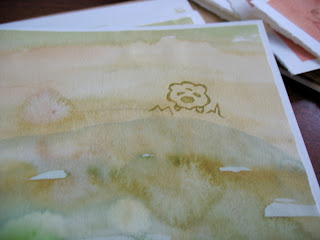This was my version of Maria's dress from The Sound of Music - the one in 'Do Re Mi'. The blouse is from a thrift store find of a sleeveless dress. I cannibalized the skirt of the dress to make the cuffed sleeves. The skirt was very simple, just panels gathered into a wide waistband. I *think* the panels were slightly trapezoidal, rather than rectangles, to reduce the bulk at the waist.
Here's the costume with the bodice on - I made it without a strict pattern. I looked at pictures from the movie, trying to pinpoint the seam lines and the shapes of the fabric pieces. From that I made a paper mock-up, and a 'muslin' from an old sheet. The bodice opens at the front, and is held together by a line of small hooks and eyes.
This costume was inspired by Degas' Little Dancer sculpture.
These two are costumes for the Renaissance Festival. I wish I could remember where I found the instructions for the chemises, but it was a fairly simple rectangle pattern with gathered neckline and wrists. The skirts were made from rectangular panels gathered into a waistband, to create the full-over-the-hips silhouette.
This is a Cleopatra costume. There's a white muslin shift, mostly unshaped, with a sheer white overdress that starts under the bust, with long straps in a v-shape. The shoulder cape opens at the back, and fastens with a button. The pleats were ironed in, and then sewn into the neck piece. The decoration is a zig-zag stitch on the sewing machine, with metallic embroidery floss woven in to add color and sparkle.
















